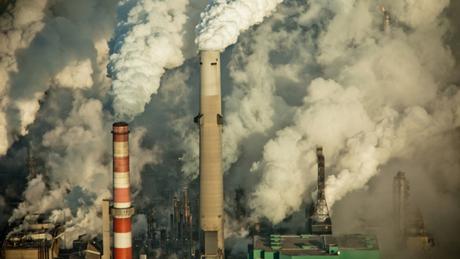GR: Moving from theoretical to practical, an article in Nature reports on the use of observed global warming to choose the best models for predicting future global warming. Future warming is normally estimated by combining several models. In the new research, the scientists found that the best models actually predict a warmer future than the combined models did. National commitments to reduce emissions have to increase.

Governments are curbing emissions, but not fast enough for 2C goal (Pic: Flickr/kris krug)
“Greater future global warming inferred from Earth’s recent energy budget”
- Patrick T. Brown & Ken Caldeira
- Nature 552, 45–50 (07 December 2017)
Abstract: “Climate models provide the principal means of projecting global warming over the remainder of the twenty-first century but modelled estimates of warming vary by a factor of approximately two even under the same radiative forcing scenarios. Across-model relationships between currently observable attributes of the climate system and the simulated magnitude of future warming have the potential to inform projections. Here we show that robust across-model relationships exist between the global spatial patterns of several fundamental attributes of Earth’s top-of-atmosphere energy budget and the magnitude of projected global warming. When we constrain the model projections with observations, we obtain greater means and narrower ranges of future global warming across the major radiative forcing scenarios, in general. In particular, we find that the observationally informed warming projection for the end of the twenty-first century for the steepest radiative forcing scenario is about 15 per cent warmer (+0.5 degrees Celsius) with a reduction of about a third in the two-standard-deviation spread (−1.2 degrees Celsius) relative to the raw model projections reported by the Intergovernmental Panel on Climate Change. Our results suggest that achieving any given global temperature stabilization target will require steeper greenhouse gas emissions reductions than previously calculated.” –Brown and Caldeira.

